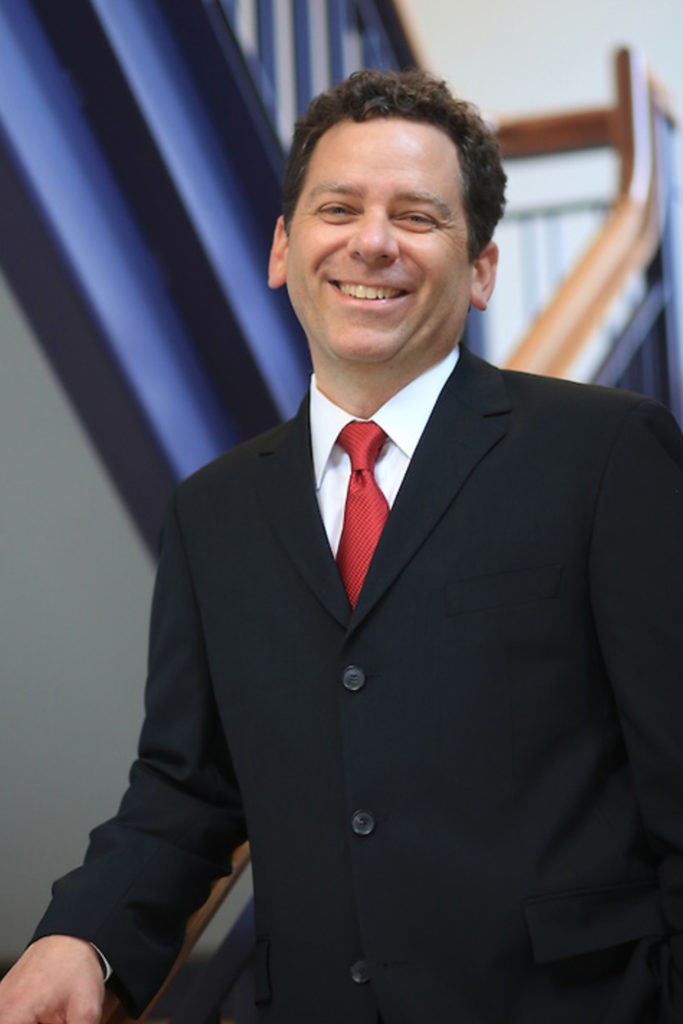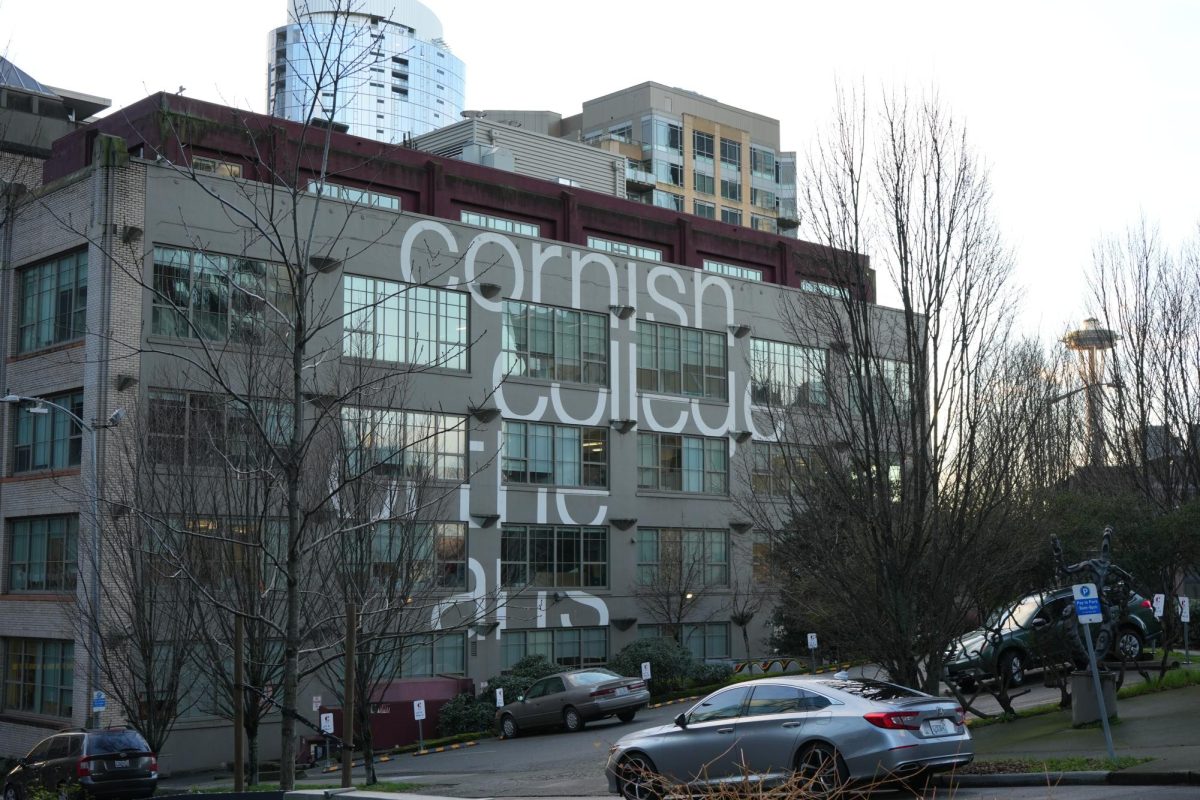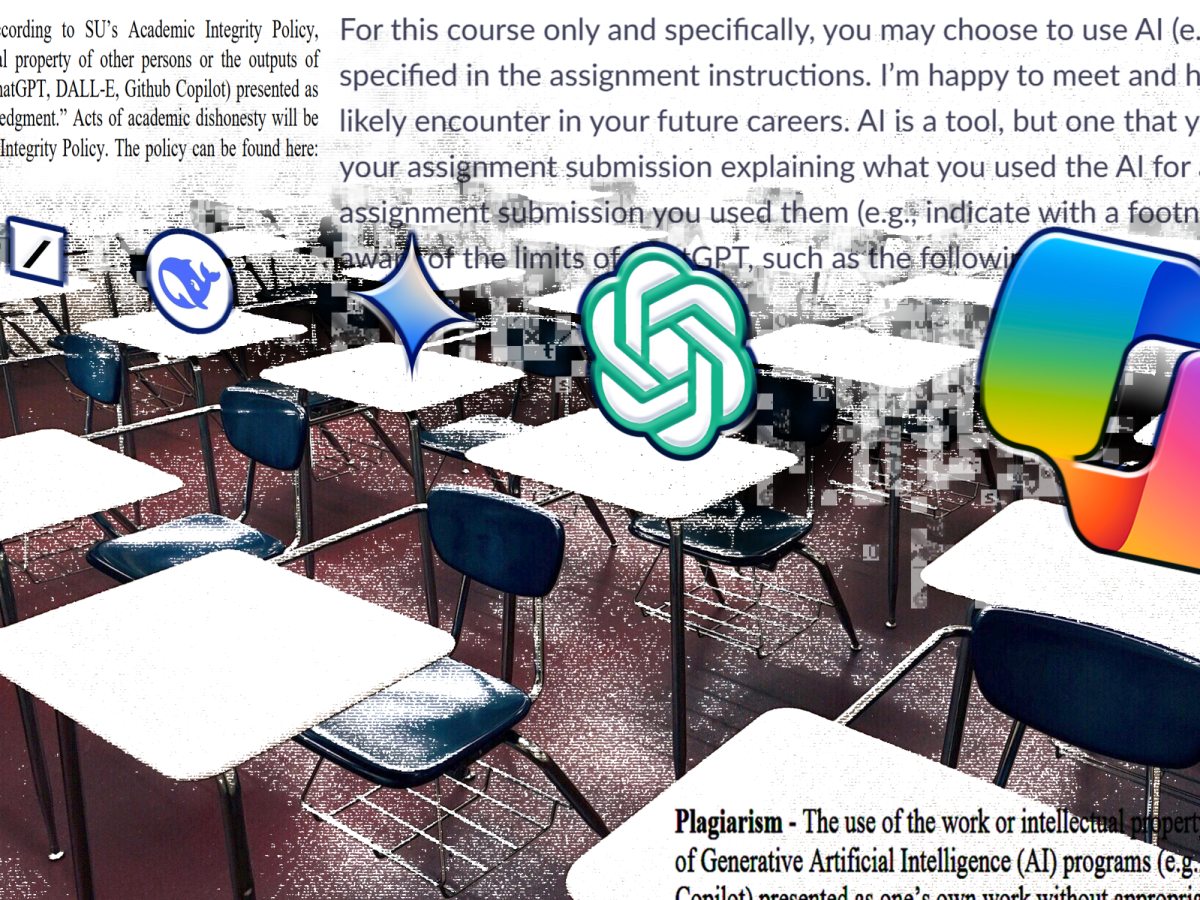Looming budget cuts for the 2018 fiscal year have colleges and departments campus-wide scrambling out of concern for the potential of growing class sizes and reduced program offerings.

Senior visual arts major Anne Lochridge painting in the Fine Arts Building.
Despite record-sized freshman classes from 2015-2016 and 2016- 2017 and an all time high sophomore retention, Seattle University will enter the next fiscal year with a reduced operational budget. Even with the additional tuition from these large new classes, the rising cost of a Seattle U education is forcing the university to make some tough decisions.
Connie Kanter is the Chief Financial Officer and Senior Vice President for Finance and Business Affairs for Seattle U. As manager of the university’s financial planning, she has been the mind behind the budget since 2014, and explained the coming challenges administration must face.
Kanter said the budget for this upcoming financial year will be tight—more so than in her previous years as CFO.
“When we were looking at things in the fall, we were looking at a shortfall that was really significant for the university,” Kanter said. “I mean, really significant. Like questionable ‘Is it double digits or not’ kind of significant. That was before any new funding requests.”
This shortfall prompted Kanter to consider a new strategy for budget reductions. She explained that it was too early in the planning stages to determine the exact dollar amount of reductions that would be necessary. Instead, Kanter asked every Vice President as well as Interim Provost Bob Dullea to come in with potential reductions of 5 percent. She speculates that the final reduction will likely be less.
“At the end of the day we’re going to need probably 3 to 3.5 percent,” Kanter said.
Small as the reductions seem, the risks posed to smaller programs throughout the college are likely to be greater than those of the larger variety. As Kanter explained, Seattle U’s size is not hospitable to such a large swath of majors, and that streamlining the departments and colleges will be the easiest way to make up ground on the budget. Smaller programs will thus be at risk for reductions in staff and course offerings. Which of these things will occur and when is still an unanswered question, creating a noticeable tension on campus.
“The mission is primary, and the budget helps us get there. But the point of the mission is not to meet a budget. The point of the budget is to support mission.”
-Dean David Powers, College of Arts & Sciences
Jason E. Miller, an anthropology instructor and Faculty Director of the Changemakers Learning Community, has stressed the importance of maintaining the liberal arts feel that is signature to the university. The anthropology program graduates only about 10 majors a year, which puts it at risk in the merged department of anthropology, sociology and social work.
“You know, part of why I think a lot of students come to Seattle U is for a really well-rounded liberal arts education, and that means supporting programs that are never going to have the same number of majors,” Miller said. “Anthropology is never going to have a hundred majors, but that does not mean that there is not value in those programs.”
Miller also expressed that he and most faculty understand the tough choices the university has to make regarding the future of funding a Seattle U education, but believe that better communication would make for a more cohesive and united front.
“I think some challenges is that there is not always a lot of clarity around the budget, and I know a lot of faculty have been asking for more budget transparency, sort of how the decisions are being made at each step,” Miller said.
In regard to transparency, Kanter says she’s really making an effort. She posted the very first “CFO Chat” on the University Budget Office Website in January, which is an audio-narrated presentation outlining the budget for the 2018 fiscal year. At the bottom of the presentation, there is a link to an online suggestion portal with a space to provide feedback on the FY18 budget. She has also opened up four hours of office hours every week.
“I know we’re engaging the faculty and deans in ways we haven’t previously, and I know the transparency around the budget is something it hadn’t been five years ago; there’s just no question,” Kanter said. “And we need to keep doing more, we need to keep engaging, and we need to keep talking to people. I want my office hours filled.”
Ki Gottberg, a theater professor and the Chair of Performing Arts and Arts Leadership, has spent a total of 30 years at Seattle U, serving in nearly every faculty position over the course of many university evolutions.
“Of course, over the term of my career here, there’s been lots of ebbs and flows,” Gottberg said.
One thing is certain, and that is Gottberg’s emphasis on the need for a special liberal arts education like the one provided historically at Seattle U.
Gottberg has hope that the university will not lose sight of its mission for the sake of finances.
“I think Seattle U should be focusing on what we do best, and increase the experience of students having a close personal relationship with academics,” Gottberg said. “I don’t feel negative about what’s coming.”
Kanter stressed that the budget reduction will not dramatically impact the student experience. She explained that she and her staff carefully examine the impact of reductions on students, faculty, staff and the community. However, reductions are likely to change some class sizes.
“Do I think some class sizes may be impacted? Yeah, I think some class sizes may be impacted,” Kanter said. “Do I think we’re going to be a school that’s going from attracting students that look for small class sizes to not being able to offer that? No. That will continue to be a differentiating feature for Seattle U.”
The prospect of larger class sizes is worrisome for professors like Allison Henrich, an associate professor and Chair in the Department of Mathematics.
“There are lots of terrible pedagogical reasons why we wouldn’t want to have classes that have bigger class sizes that have more students in them because we feel like we can’t support huge classes as well as we can support classes with twenty- something students in them,” Henrich said. “So when classes start getting up to 40 and 50 students, it’s really hard to feel like we can support students. Since we’ve spent years having budget cuts every year, there’s no more fat to trim.”
A professor in the College of Arts and Sciences, who wished to remain anonymous, told the Spectator they believe the current budgetary problems are a result of “misguided policies over the last 10 to 15 years.”
“They have cost us the very thing that makes a university: strong, vibrant, rich academic programs,” the professor said. “I have no confidence in the Board of Trustees to lead the university.”
David V. Powers, the Dean of the College of Arts and Sciences and a professor of psychology, supports a collaborative effort in brainstorming the most effective places to make reductions.

David Powers, the Dean of the College of Arts and Sciences at Seattle University.
As head of the largest college on campus, he has configured three different budgets at one, three, and 5 percent reduction.
“We’re going to the elected bodies of the college, which are the executive committees—that’s all the department chairs, and faculty staff senate, which is another shared governance body, for their recommendations on what we need to hash out in the budget advisory committee,” Powers said.
That collaborative environment is vital to facilitate. With some majors bursting at the seams, and others maintaining small, yet dedicated followings, the budget has extensive variables. Powers and the department chairs will have to make hard decisions about the future of many liberal arts programs.
“We’re in the midst of a change in higher education that I believe Seattle University, with long term planning, can get ahead of,” Powers said. “but it’s going to mean thinking about things in ways that we haven’t usually thought about. Thinking about how we live out the mission in the 21st century, and what programs help our students make a difference in the world, and how we can do those successfully with the resources we have.”
Kanter explained that the “long-term planning” mindset necessitated by administrative work can be a source of emotional tension between administration and students.
“One of the challenges in student versus administration, and it is sort of a ‘versus’ in this case, is the time frames are very different,” Kanter said. “If you’re a student, you’re here for three or four years or if you get involved as a junior you’re here for two years. So if you’re only here for a shorter period of time you do get pretty focused on, ‘What does it mean in my time frame?’ The administration, we’re thinking about the 125th and the next 125th, right?”
Christopher Paul, is the Chair of the Communications Department and an associate professor. He is working directly with the dean to help confront what changes will need to come.
Paul expressed that his department is not likely to be hit because the Communications Department is continuing to grow in size. While he could not identify what cuts other programs could face, he feared other colleges and departments could be hit worse. One end to the speculation is a new focus on openness, and Paul stressed the impact of healthy communication surrounding the budget.
“I hope we have a cross-campus discussion about it. I think it’s important to think about this as a university community, put our academic thinking-caps on, and have a discussion about it,” Paul said. “I think it’s going to force us to be more streamlined, which is a good thing.”
While both financial administrators and faculty are approaching the coming challenges with different perspectives and points of emphasis, one thing is certain—a commitment to our unique and shared Jesuit identity.
Haley may be reached at
hwitt@su-spectator.com
Les may be reached at
ltobias@su-spectator.com
















